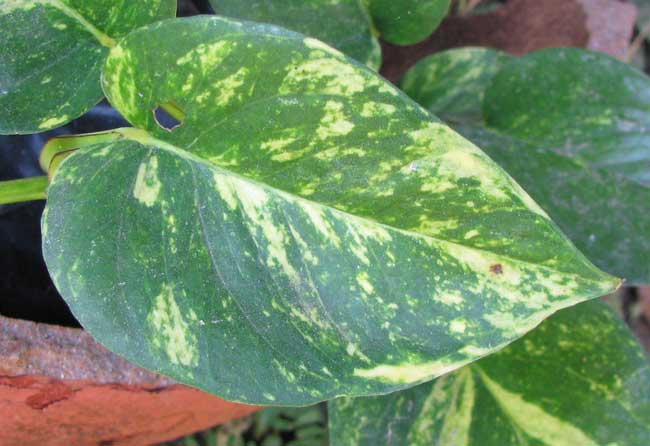Excerpts from Jim Conrad's
Naturalist Newsletter

from the December 12, 2010 Newsletter issued from Hacienda Chichen Resort beside Chichén Itzá Ruins, central Yucatán, MÉXICO; limestone bedrock, elevation ~39m (~128ft), ~N18.52°, ~W95.15°
VARIEGATED LEAVES
Next to the hut's door a variegated Pothos, Epipremnum aureum, grows in a pot. You can see one of its leaves above.
Variegated leaves appear on many ornamental plants around the Hacienda, mainly because people generally regard plants with variegated leaves as prettier than those with plain, green ones.
Once you leave the Hacienda grounds, however, and enter wild vegetation, probably you won't see any variegated leaves at all, unless it's obviously been caused by disease or physical damage. Ornamental plants maintain their variegated leaves generation after generation because gardeners take care of them. However, out in Nature variegated leaves are generally bad news. In Nature, unless caused by disease or physical damage, variegated leaves usually come about because of evolutionary/ genetic "experiments" or "mistakes." Nature always juggles the genes a tiny bit, knowing that in most cases the results will be damaging or disastrous, but that once in a blue moon something stupendous might arise.
In general, variegated plants need more light than their all-green ancestors, simply because their leaves posses less chlorophyll for photosynthesis. But the same plants may tend to scorch more under bright light than their ancestors, because their leaves contain less protective pigmentation. In natural communities, unless variegation offers an adaptive advantage such as attracting pollinators or repelling herbivores, variegated plants typically disappear, unable to compete with their non-variegated cousins.